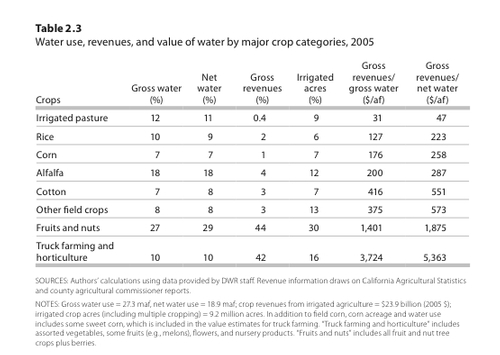UC Blogs
Agricultural water conservation — a serious look
With this latest set of storms replenishing California’s snowpack and water levels in reservoirs, rivers and streams, it may be hard to think about water conservation issues. But this is a still a semi-arid state, so it is always prudent to prepare for droughts.
So where can we save the most water? Farming in California depends on irrigation, so agriculture seems the largest potential source for cost-effective water savings in the state. Although agriculture’s share has been declining, it still accounts for roughly 75 percent of all human water use, compared to 25 percent for urban uses.
The recent book, Managing California’s Water: From Conflict to Reconciliation, examines agricultural water conservation extensively and points out the complexity of this issue. The book’s findings are based on scientific and economic research and field experience in California and worldwide.
Much agricultural water is still devoted to relatively low-value crops: In 2005, over 60 percent of “net” water use in the agricultural sector – the amount consumed by crops – was for irrigation of pasture and field crops such as alfalfa, corn, rice, and cotton, which generated only 14 percent of crop revenues. These statistics imply significant potential for reducing farm water use without incurring overwhelming consequences for the state’s economy.
Contrary to popular understanding, however, improving on-farm irrigation efficiency is usually a poor way to achieve real agricultural water savings. Real conservation usually requires shifting to crops that use less water or reducing crop production, such as by fallowing farmland. This is because much of the irrigation water applied when farmers use “inefficient” techniques like furrow irrigation is returned to streams or aquifers, where it becomes available for reuse.
This is the international scientific consensus on irrigation conservation, from studies worldwide. Most groundwater recharge in California’s Central Valley is from irrigation runoff and percolation. This recharge helps to replenish depleted aquifers and serves as a significant source of supply during drought. Only a few areas in California, such as the Imperial Valley, can save large amounts of water by adopting more efficient irrigation techniques. In such areas, the excess irrigation water flows into saline water bodies or contaminated aquifers, where it is unavailable for reuse, so reducing runoff generates real water savings.
Even though improving irrigation efficiency usually does not produce significant real water savings, it can provide economic benefits for farmers. Farmers usually pay for the amount of water they apply to their fields, not the amount consumed by crops. When farmers face limited supplies, they often have an incentive to adopt more efficient techniques, such as drip irrigation, to make use of every possible drop on their farms.
These techniques, often combined with laser leveling of fields and more precise doses of fertilizers and pesticides, can improve crop productivity and quality. In recent decades, many San Joaquin Valley farmers have made such changes, which have enabled them to plant greater acreages of higher-value fruit, nut and vegetable crops.
Improving irrigation efficiency also can provide environmental benefits. For instance, agricultural runoff sometimes contains harmful salts and other chemicals, and more efficient irrigation can help reduce these discharges. This is another reason for the rise in more efficient irrigation techniques on the west side of the San Joaquin Valley, where farmers are required to limit runoff of selenium, a toxin to wildlife. Similarly, by reducing diversions, irrigation efficiency may allow higher streamflows on particular stretches of rivers, improving conditions for aquatic life.
Although counterintuitive, more efficient irrigation techniques also can increase water consumption. By allowing farmers to farm their fields more intensively and to expand irrigated acreage with the water they “save,” techniques like drip irrigation can increase net farm water use within a region, thereby reducing groundwater recharge and nearby streamflow. Conservation-oriented policies that neglect this possibility can exacerbate groundwater overdraft, as studies from New Mexico to Yemen have shown.
What is the right policy to encourage effective agricultural water conservation? It depends on the objective. To encourage real water savings, the best policy is to let market forces work. Water markets are a flexible and efficient way to encourage farmers to create real water savings for higher-valued uses. California needs to improve the ability to buy and sell water, by reducing state and local barriers, to give farmers better price signals. To reduce polluted agricultural runoff or improve streamflows in some areas, the best policy is to adopt regulations that directly address pollution discharges and instream flows, and allow farmers to choose the most cost-effective way to meet these requirements.
In contrast, policies that impose particular irrigation technologies, or even ban specific crops, are likely to impose higher costs on farmers and society, while failing to save real water. Given the immense variety and variability of conditions in California, rigid regulatory policies to promote agricultural water conservation seem more likely to create more controversy and increased social cost than usable water savings.
Agricultural water conservation is an important part of California’s water future. But simplistic notions of water conservation threaten to mislead California’s water policy debates by presenting the false claim that water saved from on-farm use is necessarily water saved to the system. It is time to take water conservation seriously. In doing so, we also must undertake water conservation scientifically, rather than rhetorically.
(This post is excerpted from the California WaterBlog—“Taking Agricultural Conservation Seriously”.)
Sudden-Death Question
Quick! What's the answer to this question? "I am a blood feeder; I have no hair but have a comb. What am I?" That was the final question posed when...
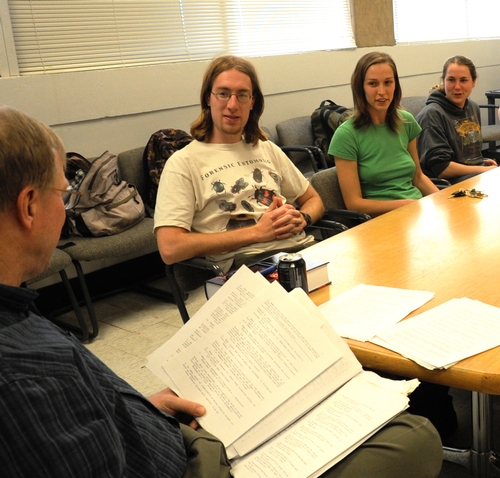
Practicing for the Games
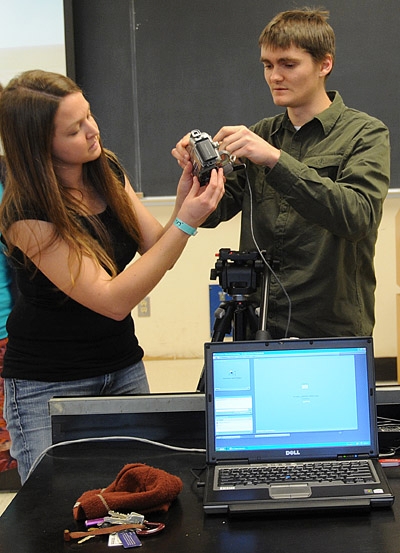
Webcasting
Farm advisor helps keep Napa County agriculture safe and strong
Napa County UC Cooperative Extension viticulture advisor Monica Cooper is critical to the local agricultural industry, but her role is not well understood by the public, according to a profile in the Napa Valley Register.
Cooper took the post two years ago, following the untimely death of her predecessor Ed Weber.
“Monica could not have arrived at a more important time for Napa’s winegrape industry,” the story quoted Jennifer Putnam, executive director of the Napa Valley Grapegrowers Association. “We were incredibly fortunate to have such an accomplished entomologist in the role just as the European grapevine moth infestation was being discovered. She, along with our ag commissioner and others, quickly developed and acted on a plan to control the spread of this devastating pest. Her sense of urgency and expertise were critical in our ability to get a handle on that outbreak.”
Cooper has a doctorate degree in plant medicine from the University of Florida, where she also studied entomology, plant pathology, weed and soil science, agronomy and horticulture, the article said.
“I think Monica has (been) a tremendous asset for the valley,” Whitmer was quoted. “I feel bad that right out of the gate she had to deal with the European grapevine month, but she’s been a tremendous help in providing the science to help fight it.”
A former Peace Corps volunteer, Cooper got her start at UC in the Berkeley laboratory of biological control specialist Kent Daane.
Cooper told reporter Paul Franson she is happy with her job in Napa.
"I love working in an agricultural county,” Cooper was quoted. “The variety of work is most interesting, too. You never know what will happen and I could never sit in an office all day. I love working with growers. They’re always thirsty for information.”
Queen Bee to Be
One of the highlights of Susan Cobey's class on "The Art of Queen Bee Rearing" is a visit to commercial queen bee breeders in Northern...

Egg
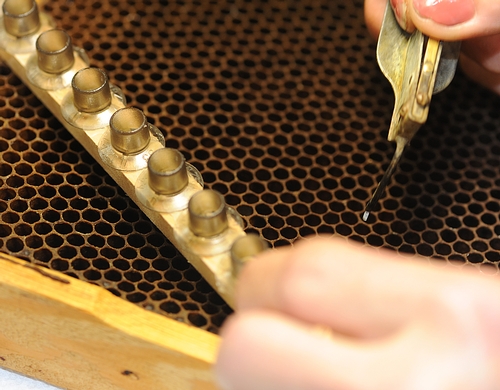
Grafting
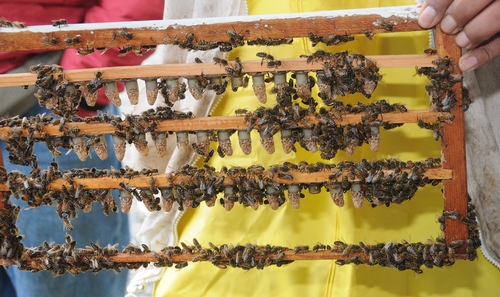
Almost Finished
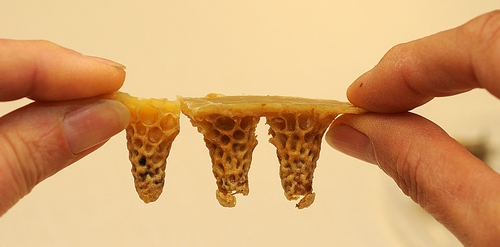
Close-up

Queen Bee and Her Retinue
UCCE's Richard Molinar appointed to USDA advisory committee
U.S. Agriculture Secretary Tom Vilsack appointed UC Cooperative Extension farm advisor Richard Molinar to a two-year term on the Minority Farmer Advisory Committee, said a USDA news release issued on Friday. Molinar is the only California representative on the roster.
The 15-member committee will advise Vilsack on implementation of outreach and assistance efforts to socially disadvantaged farmers and ranchers, promote the participation of minority farmers and ranchers in USDA programs, and support civil rights activities with USDA.
"The Obama Administration is committed to ushering in a new era of civil rights at USDA," Vilsack was quoted in the release. "This advisory committee will provide guidance that will ensure that all eligible applicants for our programs are served in an equal and fair manner and will enable USDA to enhance opportunities for minority farmers and ranchers."
Under Secretary Vilsack's leadership, USDA is addressing civil rights concerns that go back decades, the release said. It listed the following examples:
- Vilsack communicated his commitment to improving the USDA's record on civil rights during a live webcast with employees on his first day in office.
- USDA worked with the Department of Justice to enter into a settlement with black farmers.
- USDA and DOJ settled a class action lawsuit filed by Native American farmers alleging discrimination by USDA.
- Last month, Vilsack and DOJ announced the establishment of a process to resolve the claims of Hispanic and women farmers and ranchers who assert that they were discriminated against when seeking USDA farm loans.
News of Molinar's appointment was picked up by the Fresno Bee, Agri-Pulse.com, and AgNetwork.com.
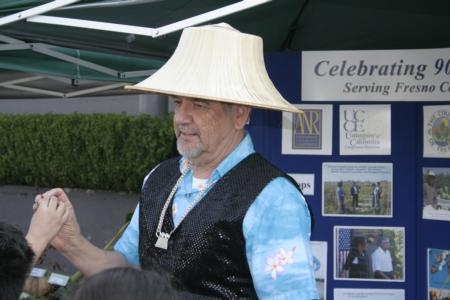
Richard Molinar


